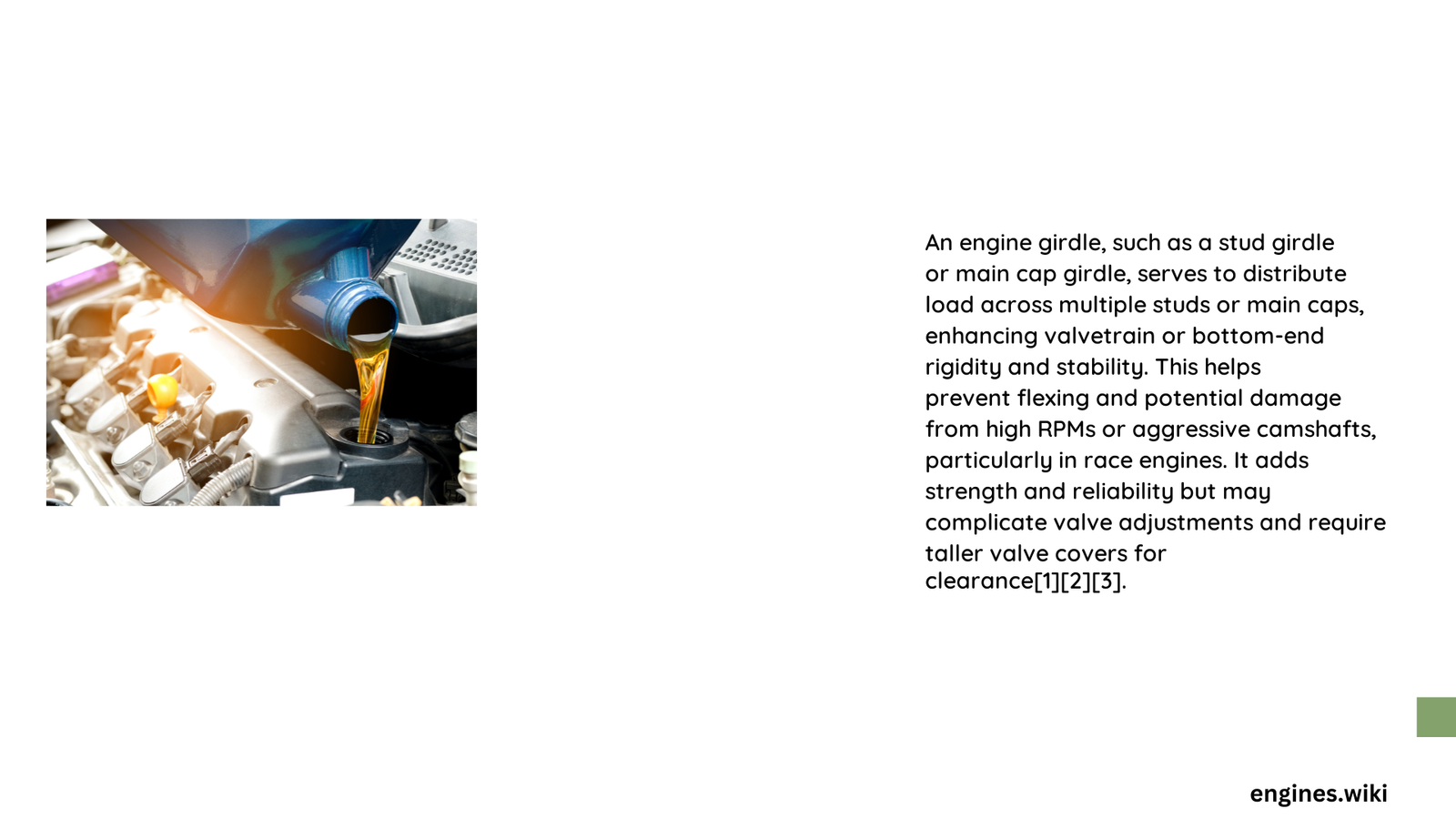An engine girdle serves as a critical structural enhancement for internal combustion engines, providing comprehensive stabilization of the engine block’s main bearing caps. By connecting and bracing these critical components, the girdle reduces block flexing, minimizes bearing movement, and supports high-performance engine operations across various automotive and racing applications. This structural reinforcement ensures improved engine durability, reduced vibrations, and enhanced overall mechanical integrity.
What Is the Primary Function of an Engine Girdle?
Why Does Engine Rigidity Matter?
Engine rigidity represents a fundamental aspect of mechanical performance. An engine girdle acts as a comprehensive structural reinforcement system designed to:
- Stabilize Main Bearing Caps
- Reduce Block Flexing
- Minimize Mechanical Vibrations
- Support High RPM Operations
Key Performance Characteristics
| Performance Aspect | Girdle Impact | Mechanical Benefit |
|---|---|---|
| Structural Integrity | High | Reduces Block Deformation |
| Vibration Reduction | Significant | Smoother Engine Operation |
| Bearing Stability | Enhanced | Extended Component Lifespan |
How Does an Engine Girdle Improve Mechanical Performance?
The engine girdle’s primary mechanism involves creating a unified, reinforced structure around the engine’s critical load-bearing components. By connecting main bearing caps with precision-engineered materials like high-strength steel or aluminum, the girdle:
- Prevents lateral movement of bearing caps
- Distributes mechanical stress more evenly
- Maintains consistent bearing clearances
- Supports higher rotational speeds
What Materials Compose Modern Engine Girdles?
Manufacturers typically construct engine girdles using:
- Billet Steel: Highest strength-to-weight ratio
- Aerospace-Grade Aluminum: Lightweight performance
- Specialized Alloys: Custom engineering requirements
When Should You Consider an Engine Girdle?
Ideal applications include:
- High-performance racing engines
- Turbocharged configurations
- Modified street performance vehicles
- Engines experiencing significant mechanical stress
What Are the Installation Considerations?
Critical installation factors involve:
- Precise alignment of main bearing caps
- Specific torque specifications
- Compatibility with existing engine architecture
- Professional assessment of mechanical requirements
What Performance Gains Can Be Expected?
Performance improvements typically include:
- 5-10% reduction in mechanical vibrations
- Enhanced rotational stability
- Improved bearing longevity
- Potential incremental horsepower gains
Technical Insights and Practical Recommendations

Professional automotive engineers recommend comprehensive evaluation before girdle installation. While the component offers significant mechanical advantages, proper selection and professional installation remain paramount.
Expert Tips
- Consult manufacturer specifications
- Use precision measurement tools
- Verify compatibility with specific engine configurations
- Consider professional installation for optimal results
Conclusion
An engine girdle represents a sophisticated engineering solution for enhancing mechanical performance, providing critical structural support across diverse automotive applications.
